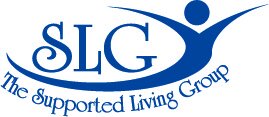Navigating the Connecticut Money Follows the Person Program: A Guide for Brain Injury Survivors
Are you or a loved one living with a brain injury in Connecticut and seeking to transition from institutional care to community-based living? The Connecticut Money Follows the Person (MFP) Program may be the solution you've been looking for. In this blog post, we'll explore how brain injury survivors can effectively navigate the MFP Program to achieve greater independence and quality of life.
Understanding the Connecticut Money Follows the Person Program
The Money Follows the Person Program is a Medicaid initiative designed to assist individuals with disabilities, including brain injury survivors, in transitioning from institutional settings, such as nursing homes or long-term care facilities, to community-based living supports such as those offered by The Supported Living Group. By providing funding and support services, the MFP Program aims to empower individuals to live fulfilling lives in their communities.
Key Steps for Brain Injury Survivors
Assessment and Eligibility: The first step in navigating the MFP Program is to apply and then undergo a comprehensive assessment to determine eligibility. Individuals must meet certain criteria, including being Medicaid-eligible and residing in an eligible institutional setting for a specified period.
Developing a Transition Plan: Once deemed eligible, brain injury survivors work with a transition coordinator to develop a personalized transition plan. This plan outlines the individual's goals, preferences, and needs, as well as the services and supports required for successful community living.
Securing Housing and Support Services: With the assistance of the transition coordinator, individuals begin the process of securing suitable housing and arranging for necessary support services, such as personal care assistance, transportation, and medical care. At this stage individuals should request to meet with at least 4-5 provider agencies to determine the best fit for their needs.
Transitioning to Community Living: After all arrangements are in place, brain injury survivors undergo the transition process, moving from the institutional setting to their new community-based living arrangement. Transition support services may be provided to facilitate a smooth transition and address any challenges that arise.
Ongoing Support and Follow-Up: Once transitioned to community living, brain injury survivors continue to receive support and services as needed to ensure their well-being and success in their new environment. This may include case management, counseling, and access to community resources such as those offered by The Supported Living Group.
How The Supported Living Group Can Help
At The Supported Living Group, we understand the unique needs of brain injury survivors transitioning to community living through the MFP Program. Our team of dedicated professionals provides comprehensive support services tailored to the individual needs and goals of each participant. From housing assistance to agency-based case management and beyond, we're here to empower brain injury survivors on their journey to independence and fulfillment.
If you or a loved one are considering transitioning to community living through the Connecticut Money Follows the Person Program, contact The Supported Living Group today at 860-774-3400 or email info@slg-ct.com to learn more about how we can support you every step of the way.
#BrainInjurySurvivors #MoneyFollowsThePerson #CommunityLiving #Connecticut #SupportedLivingGroup

